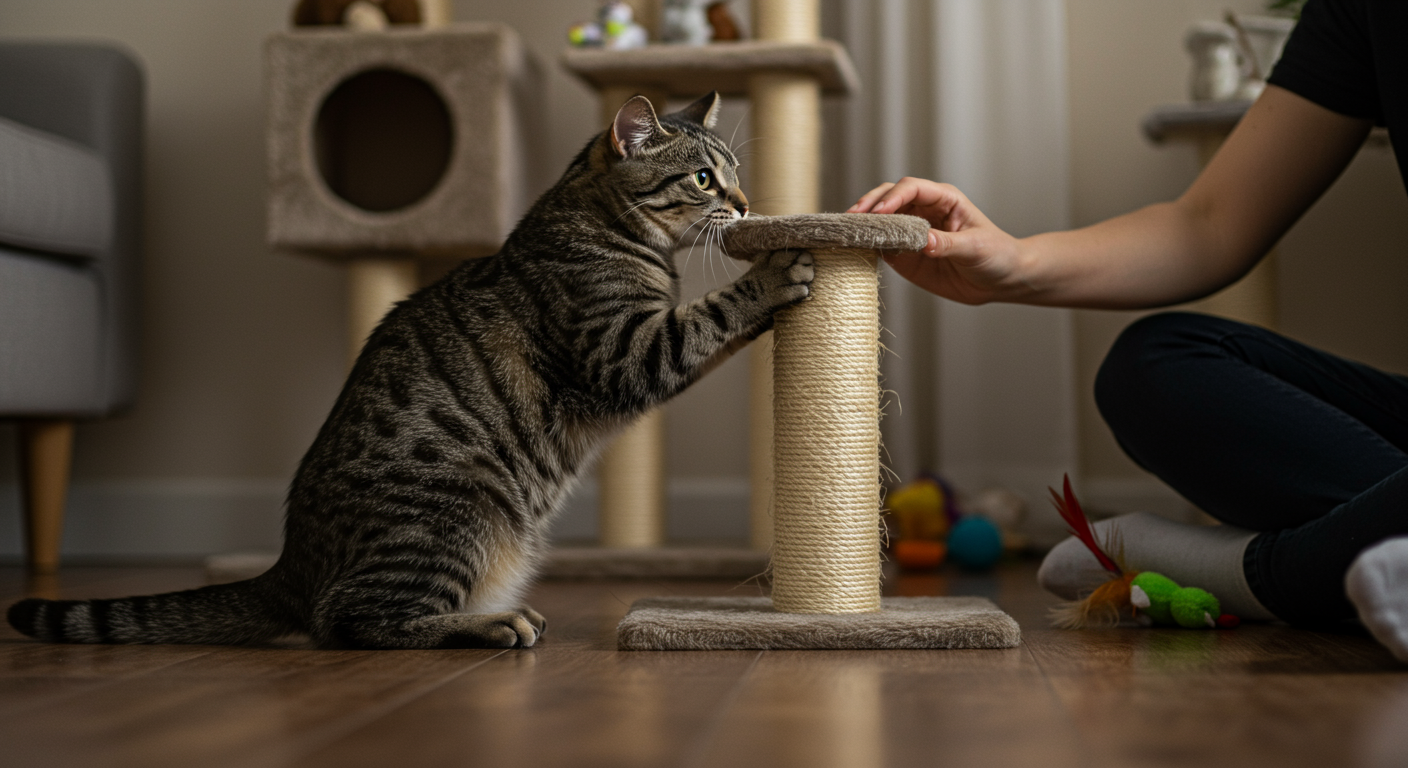As an experienced cat parent, you know that feline behavior can be both charming and, at times, challenging. One of the most common frustrations is destructive scratching, which can leave your furniture in tatters. This guide dives deep into the reasons behind this behavior and offers advanced strategies to redirect your cat's natural instincts while preserving your home's beauty.

Deep Dive into Cat Scratching for Advanced Pet Parents
Scratching is a fundamental behavior for cats. It serves multiple purposes: marking territory, stretching muscles, and keeping claws healthy. However, when this natural instinct leads to furniture destruction, it's time to implement solutions tailored for the discerning cat owner.
Advanced Strategies and Insights
Understanding the 'Why' Behind the Scratch
- Territorial Marking: Cats have scent glands in their paws, leaving both visual and scent markers when they scratch.
- Claw Maintenance: Scratching removes the outer layers of their claws, keeping them sharp and healthy.
- Stress Relief: Scratching can be a displacement behavior when a cat is stressed or anxious.
Advanced Scratching Post Placement and Selection
- Strategic Placement: Position scratching posts near areas your cat already scratches and in high-traffic areas.
- Variety is Key: Offer a variety of scratching surfaces, including vertical posts, horizontal scratchers, and even corrugated cardboard options. Consider a cat tree that incorporates multiple scratching surfaces.
- Material Matters: Experiment with different materials like sisal, carpet, wood, and cardboard to find your cat's preference.
Nail Care and Maintenance
- Regular Trimming: Trim your cat's nails every 2-3 weeks using quality cat nail clippers. This reduces the damage caused by scratching and makes it less appealing to scratch furniture.
- Introduce Nail Trimming Early: Get your cat accustomed to nail trims from a young age, making the process easier for both of you.
Environmental Enrichment and Behavioral Modification
- Increase Playtime: Provide plenty of interactive playtime to burn off excess energy and reduce the likelihood of destructive scratching. Aim for at least 15-20 minutes of interactive play per day.
- Positive Reinforcement: Reward your cat with treats and praise when they use scratching posts or other appropriate scratching surfaces.
- Environmental Enrichment: Create a stimulating environment with toys, climbing structures, and interactive feeders to keep your cat engaged and entertained.
Case Study: Achieving Scratch-Free Furniture
- The Scenario: A cat owner struggled with their cat scratching a leather sofa.
- The Solution: The owner placed multiple scratching posts near the sofa, used double-sided tape on the areas of the sofa the cat was scratching, and increased interactive playtime.
- The Result: The cat began using the scratching posts, and the sofa was protected from further damage.
Navigating Complex Pet Challenges
Dealing with Multi-Cat Households
- More Scratching Posts: Provide at least one scratching post per cat, plus one extra, to minimize competition and territorial disputes.
- Separate Resources: Ensure each cat has their own food and water bowls, litter box, and resting areas to reduce stress.
Addressing Underlying Medical Issues
- Consult Your Vet: Rule out any underlying medical conditions, such as arthritis or pain, that could be contributing to the scratching behavior.
- Pain Management: If your cat is experiencing pain, your veterinarian can recommend appropriate pain management strategies.
Integrating Advanced Care Practices
- Consider a Catio: If possible, create a safe outdoor space for your cat to scratch and explore, reducing the need to scratch indoor furniture.
- Training and Enrichment: Combine positive reinforcement with environmental enrichment to create a well-rounded approach to behavior modification.
Long-Term Wellness & Longevity Tips
- Consistent Reinforcement: Continue to reward desired behaviors and provide ample scratching opportunities throughout your cat's life.
- Regular Vet Check-ups: Schedule regular check-ups with your veterinarian to monitor your cat's overall health and address any potential issues early on.
Expert-Level Pet Care Insights
- Professional Consultation: Consider consulting with a certified cat behaviorist for personalized advice and support if you're facing persistent challenges.
- Patience and Consistency: Behavior modification takes time and patience. Stay consistent with your training and strategies, and celebrate small victories along the way. Remember, protecting your furniture and keeping your cat happy is a journey, not a destination.